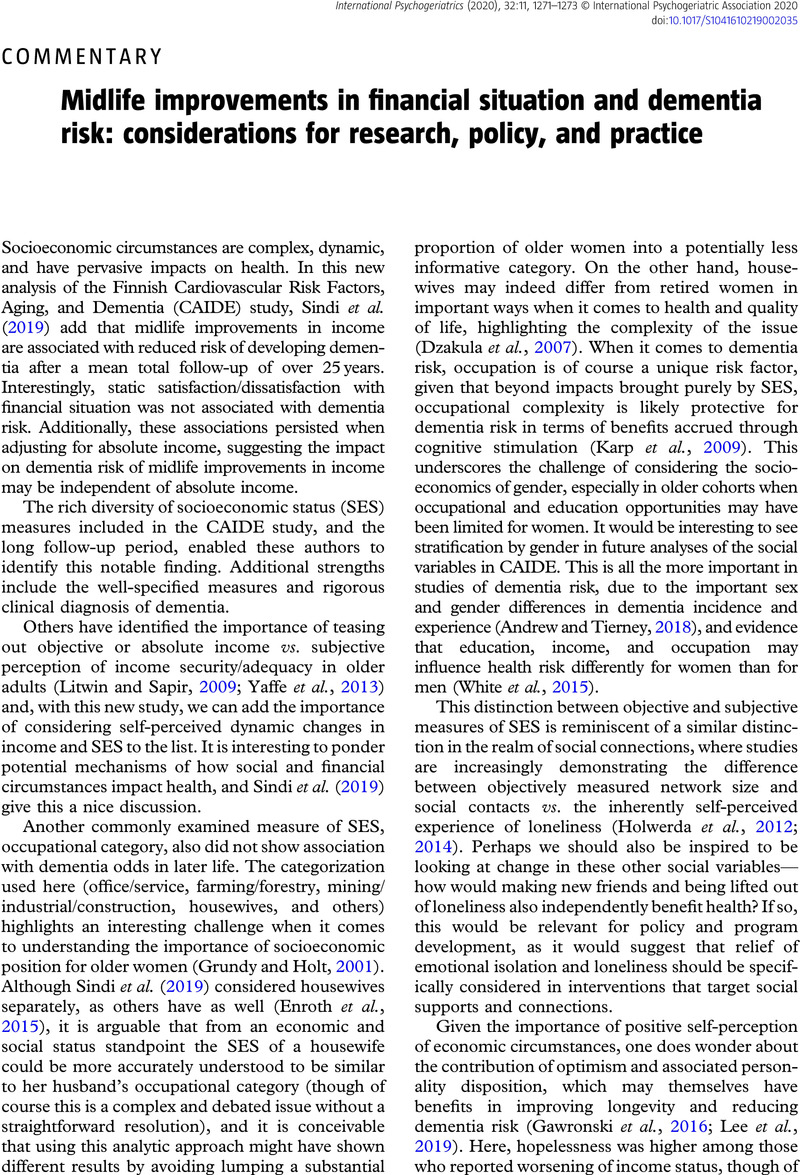Crossref Citations
This article has been cited by the following publications. This list is generated based on data provided by Crossref.
Wang, A.-Y.
Hu, H.-Y.
Ou, Y.-N.
Wang, Z.-T.
Ma, Y.-H.
Tan, Lan
and
Yu, Jin-Tai
2023.
Socioeconomic Status and Risks of Cognitive Impairment and Dementia: A Systematic Review and Meta-Analysis of 39 Prospective Studies.
The Journal of Prevention of Alzheimer's Disease,
Vol. 10,
Issue. 1,
p.
83.



